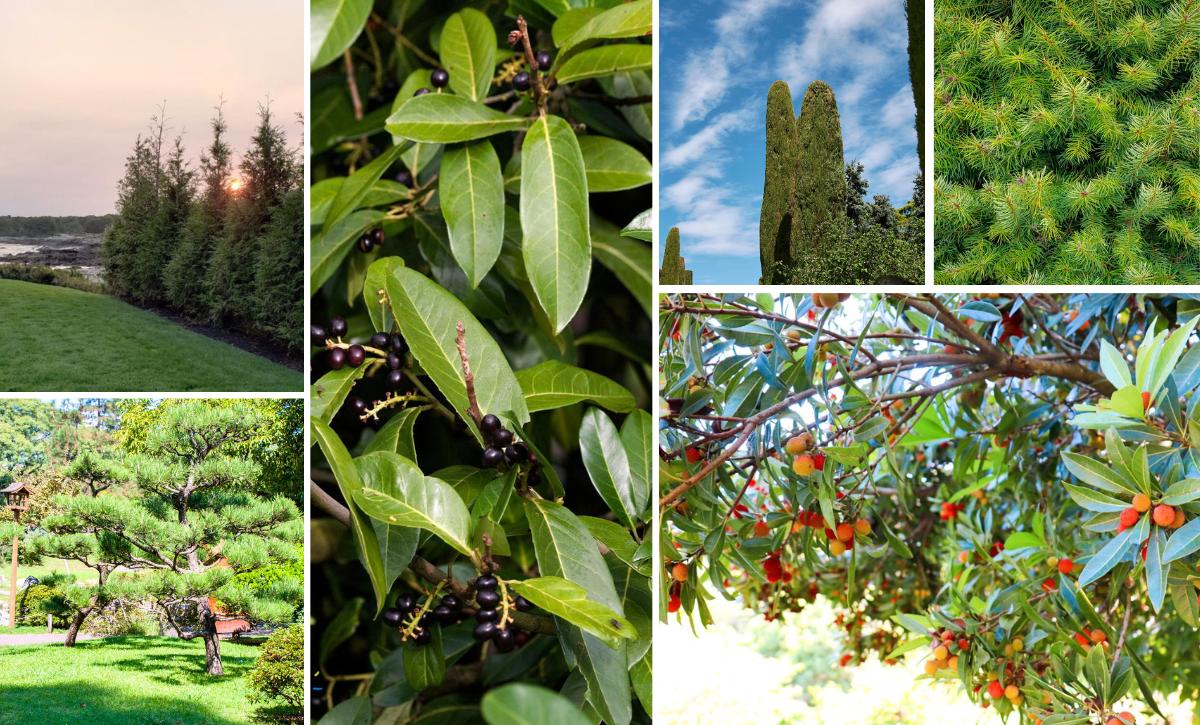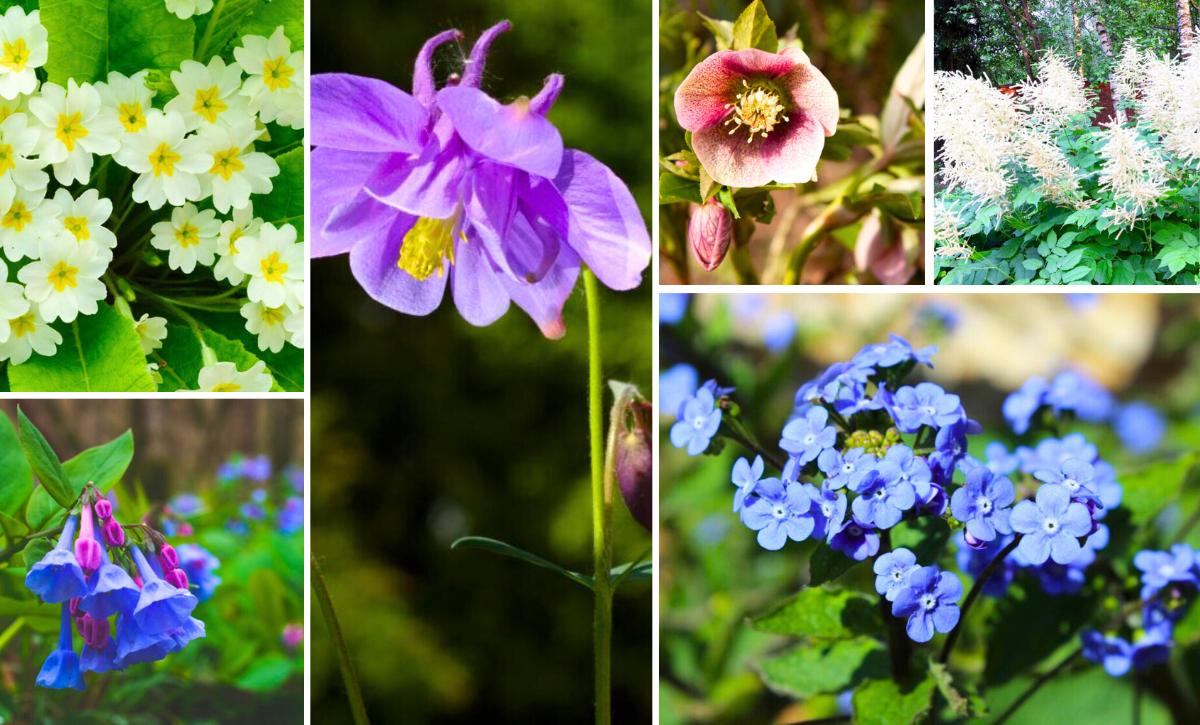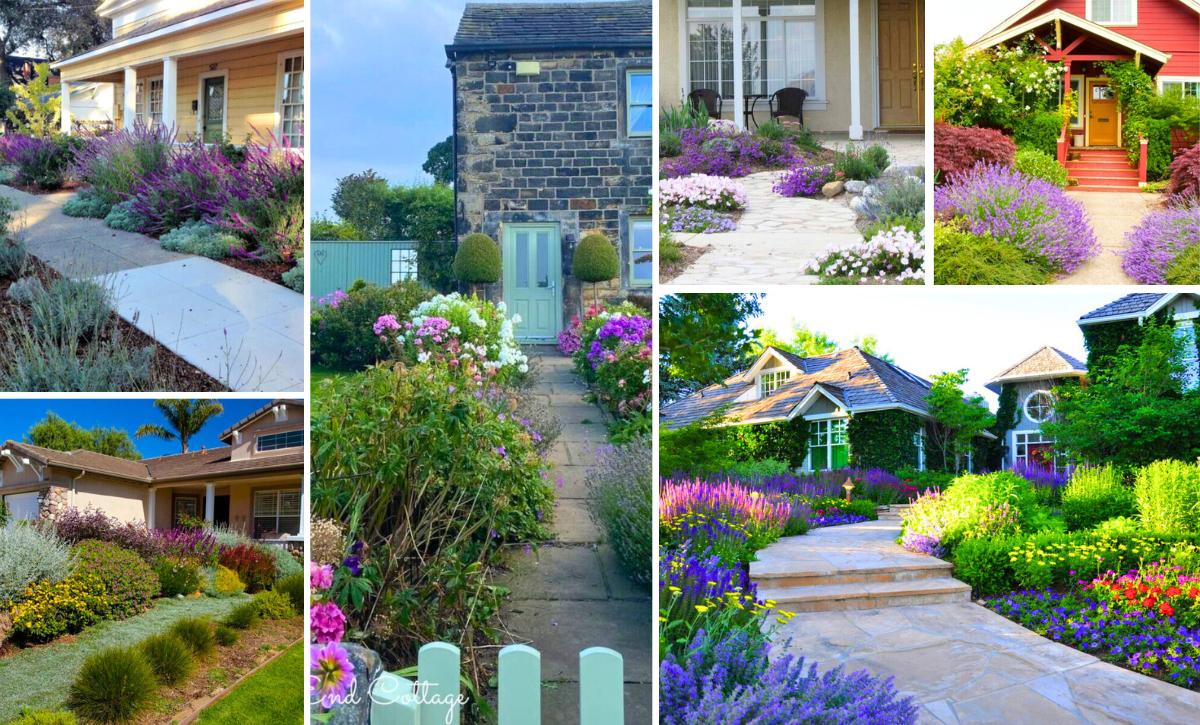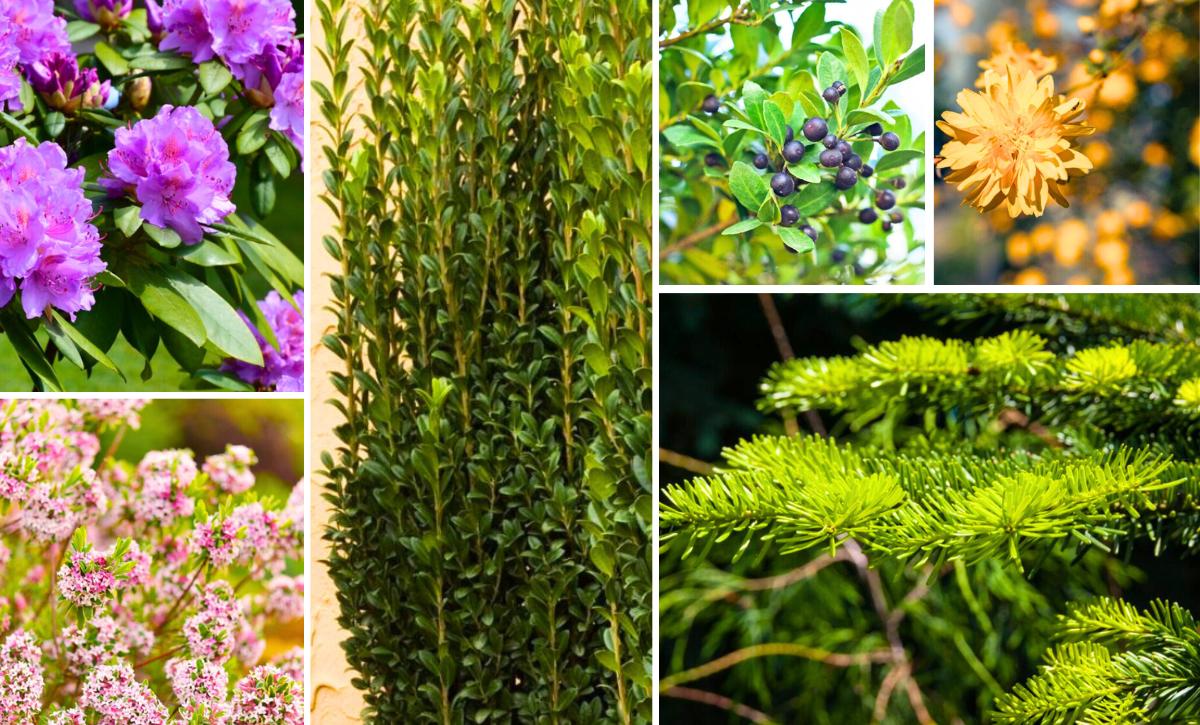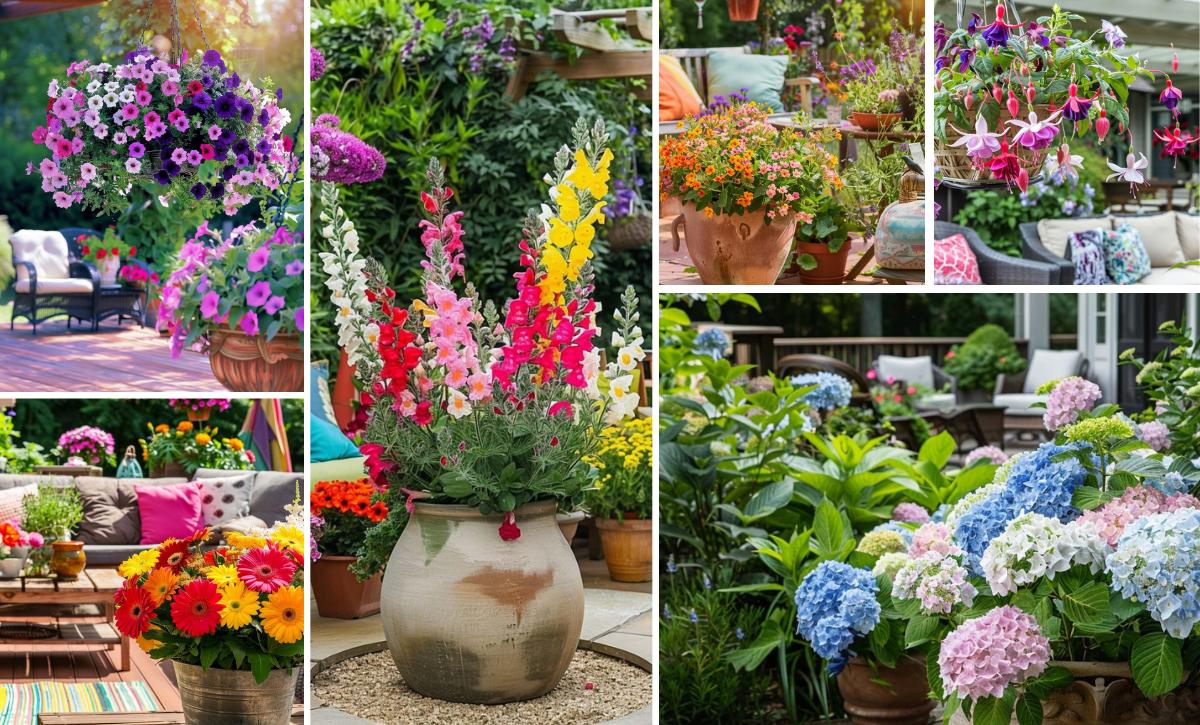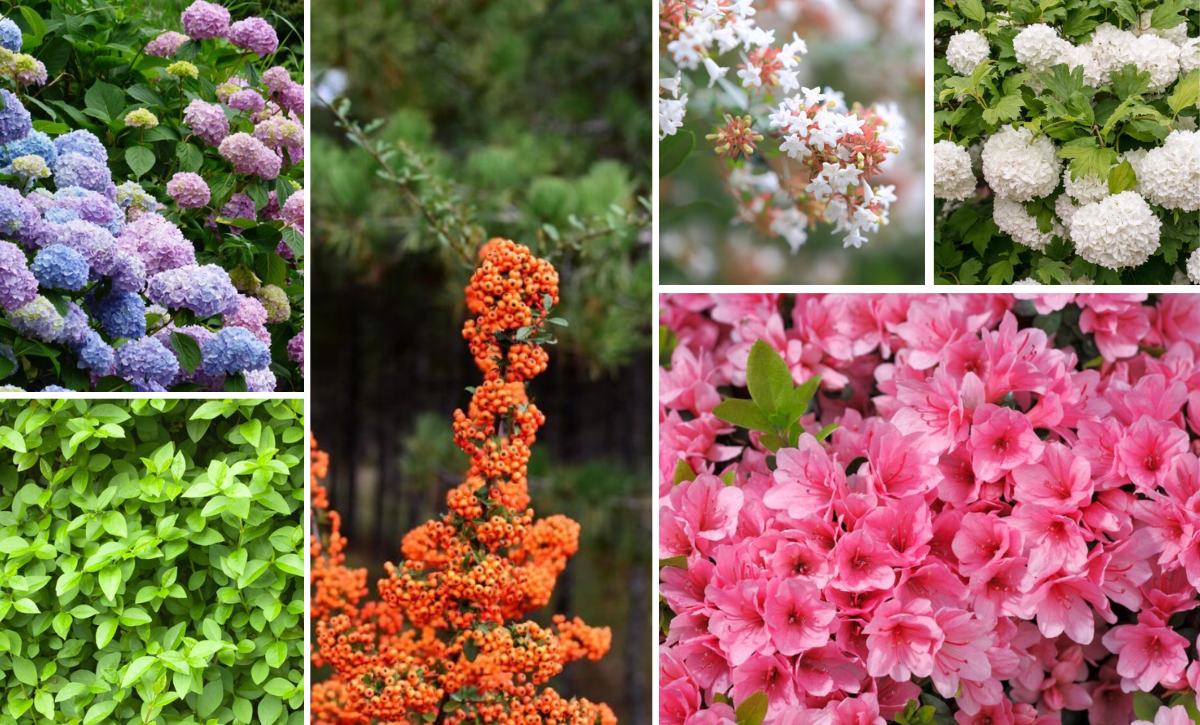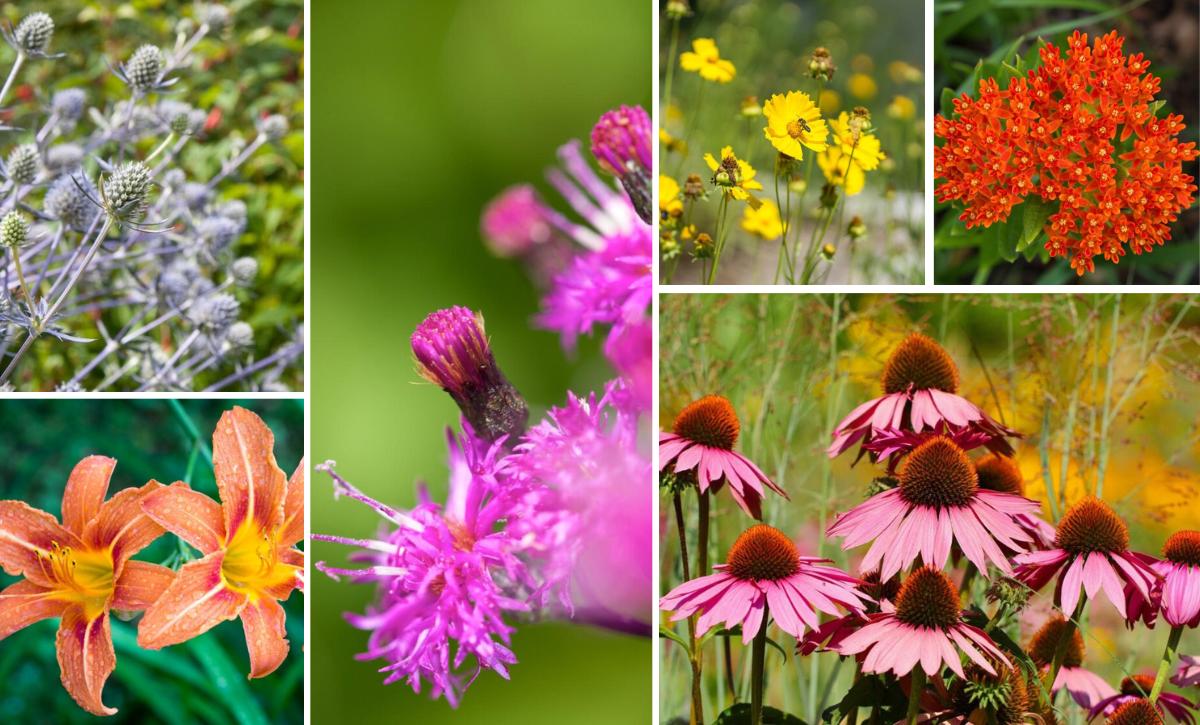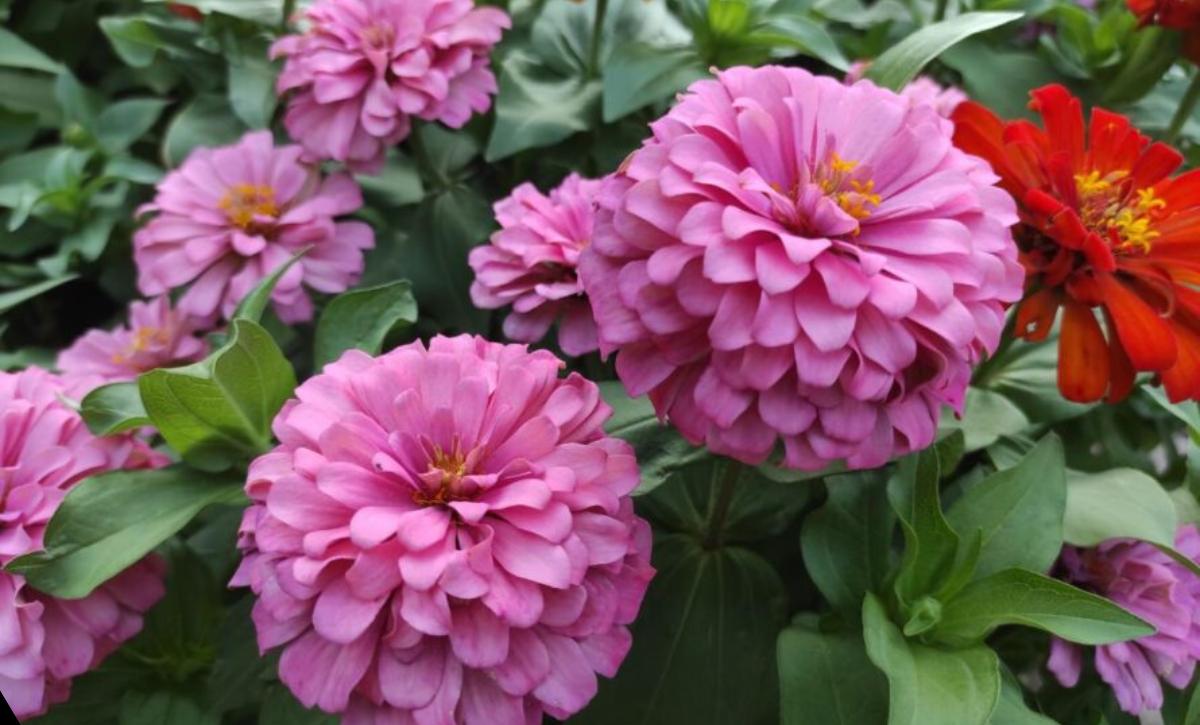While some plants prefer the safety of the shade, some plants will only thrive when they receive full sunlight. This means the plant must receive at least six to eight hours of direct sunlight for most of its life.
However, some perennials will need slight shading during the hottest part of the day. You should note that the moisture needs of sunny perennials will vary; some plants prefer dry conditions, while others thrive in moist soil.
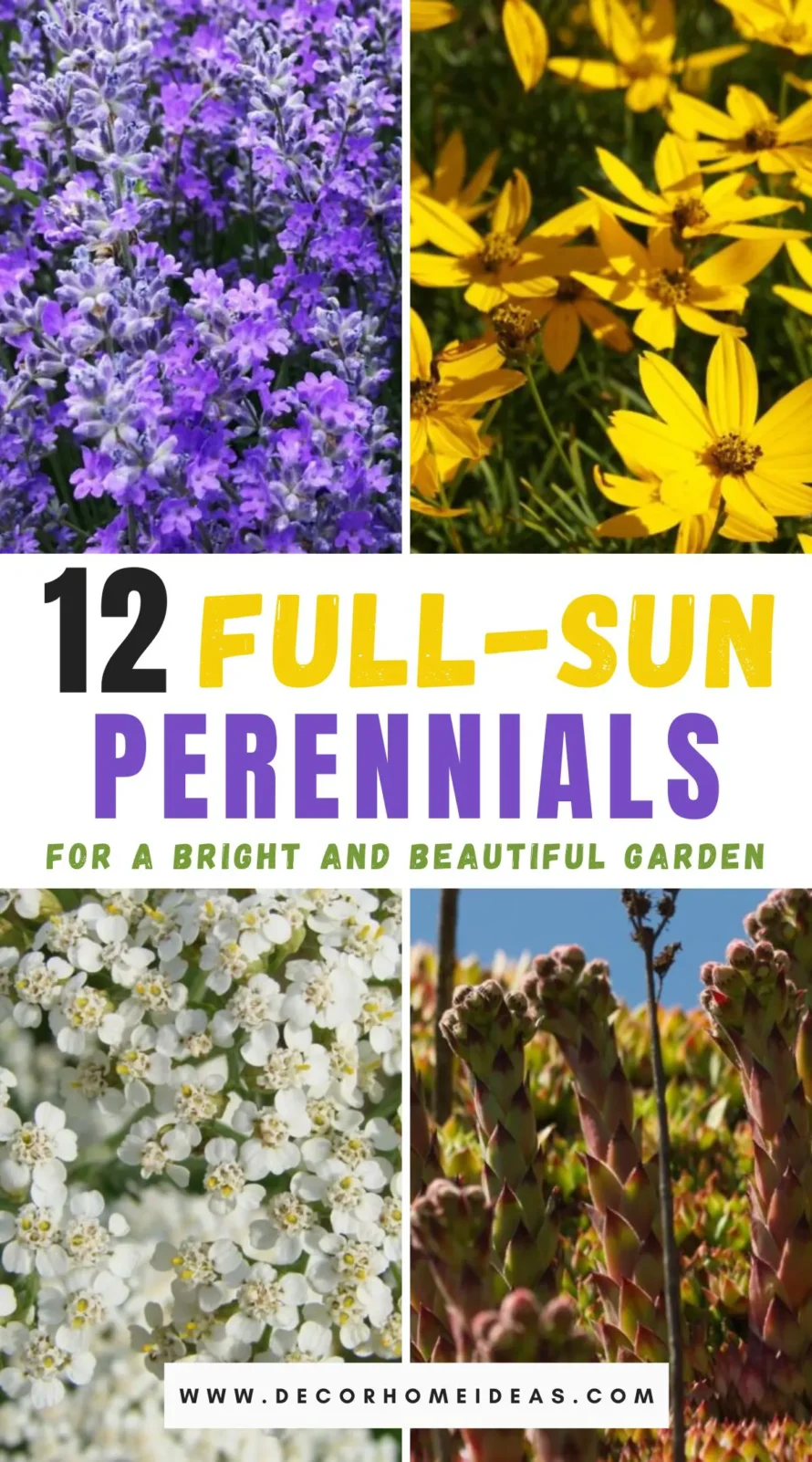
The importance of sun and moisture will also vary based on the plant; for some plants, moisture is just as essential as sunlight. Here are some perennials that thrive in full light.
Pro Tip: Research your plants’ bloom period before growing them. Knowing their flowering time will enable you to arrange your garden with a good pattern from spring to fall.
1. Threadleaf Coreopsis (Coreopsis verticillata ‘Moonbeam’)
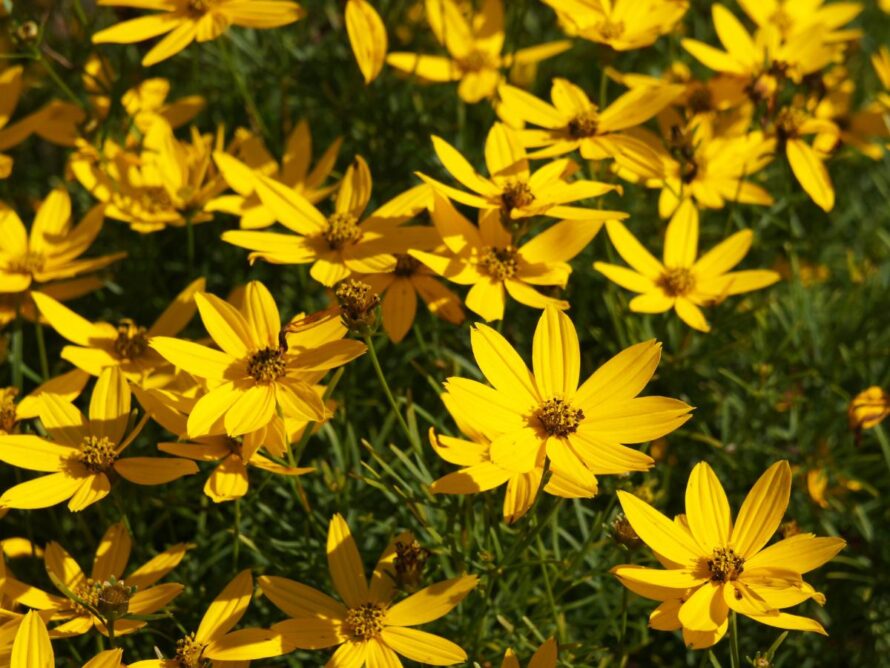
| Color varieties: | Yellow |
| Soil: | Dry to medium moisture, sandy or rocky, well-draining |
| Sun exposure: | Full sun |
| USDA growing zones: | 3 – 9 |
Commonly known as the tickseed, the Threadleaf coreopsis has a long blooming period that may last from June through August. The spread size for this plant is about two feet tall and wide, although the spread can sometimes be aggressive, primarily via underground rhizomes and self-seeding.
Remove any dead blooms to prevent the plant from being invasive and ensure no self-seeding. Pruning should be done in summer to allow the plant to regrow during the fall.
2. Yarrow (Achillea millefolium)
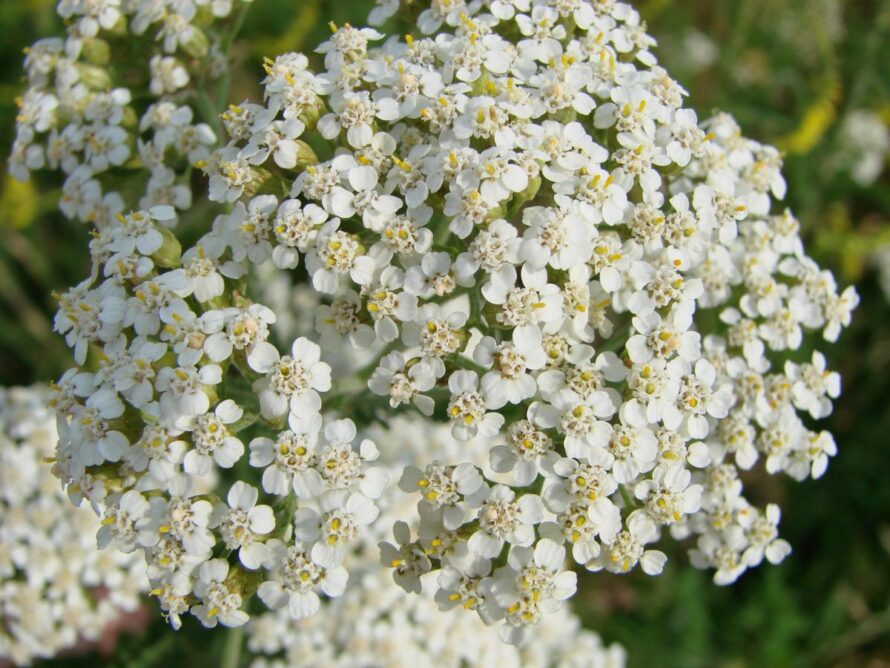
| Color varieties: | Primary color is white, with cultivars in a variety of colors |
| Soil: | Dry to medium moisture, well-draining |
| Sun exposure: | Full sun |
| USDA growing zones: | 3 – 9 |
This species makes an excellent complementary plant to colorful flowers. The yarrow species produces white blooms, while other cultivar varieties may produce pink, red, cream, yellow, and other bicolor pastels. Achillea millefolium attracts butterflies and other pollinators, so it benefits your garden.
This plant needs room when growing as it may have a large spread. Leave about two to three feet of width and height for each plant. If your plant grows beyond this size and becomes invasive, you should pull it out.
The yarrow is an aggressive spreader, primarily if it’s provided with the right conditions. After the plant blooms in the first season, you should cut it back to encourage blooming in subsequent seasons. This will also help the plant’s shape remain in check.
3. English Lavender (Lavandula angustifolia)
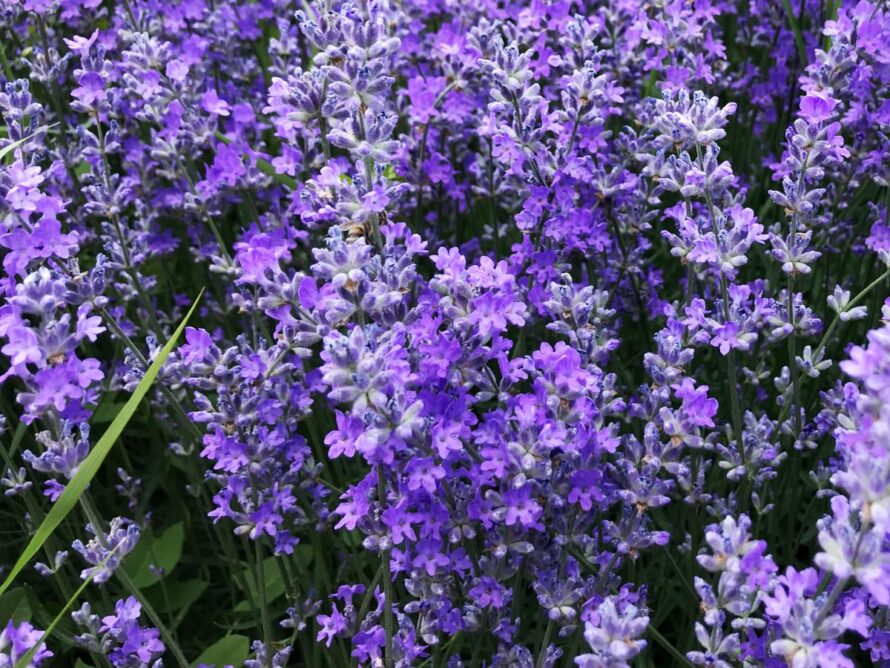
| Color varieties: | Purple |
| Soil: | Well-drained, dry conditions (sand and gravel), less fertile |
| Sun exposure: | Full sun |
| USDA growing zones: | 5 – 8 |
English Lavender is a multifunctional plant serving more than one garden purpose. First, the purple blooms and greenish-gray foliage add beauty to any space. Second, it fantastic fragrance will not only be a natural air freshener in your outdoor space but can also keep pests away. You can even harvest some of the herbs to take the fragrance indoors.
Once dried, the blooms can be used to make sachets, which can be added to drawers or closets to freshen up such spaces. Pruning should be done in spring once new leaves appear. To prolong the flowering period, remove any faded flowers. The English lavender thrives in dry conditions; overly wet soil can kill the plant.
4. ‘Autumn Joy’ Stonecrop (Hylotelephium ‘Herbstsfreude’)
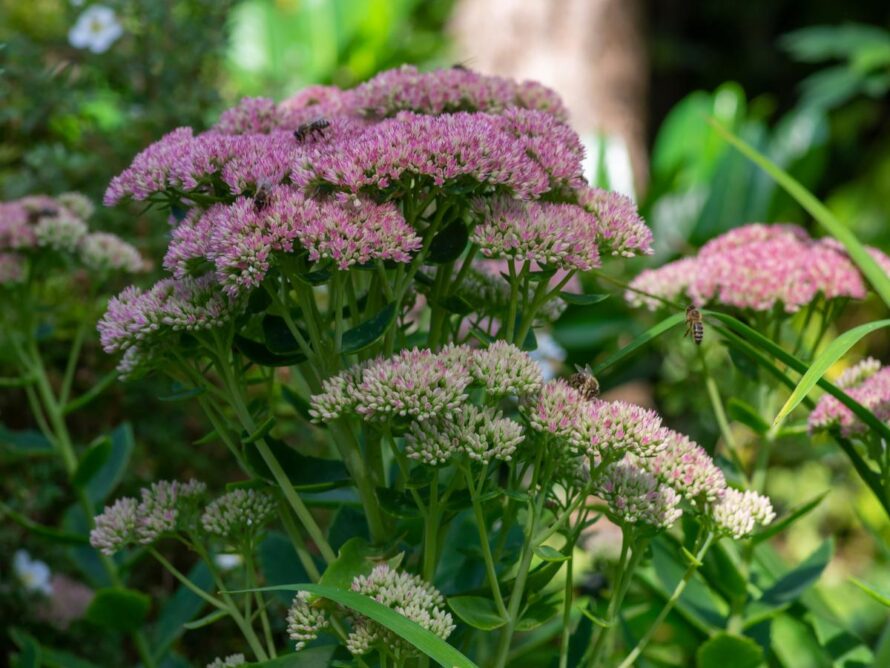
| Color varieties: | Pink to red |
| Soil: | Average, well-draining soil with dry to medium moisture |
| Sun exposure: | Full sun |
| USDA growing zones: | 3 – 9 |
The Autumn Joy Stonecrop has a unique flowering cycle from September through October, producing pale pink flattened blooms long after most perennials have bloomed, hence the name Autumn Joy. When planting a garden that needs to bloom all year round, this perennial will have you sorted through the fall. The plant also serves as a good food source for pollinators such as bees.
Ensure that it’s grown in well-draining soil and avoid a substrate that’s too rich. The plant will need some pruning during spring and mid-summer to prevent flopping and promote sturdy plants. It’s also better to delay the flowering until fall.
5. Black-Eyed Susan (Rudbeckia hirta)
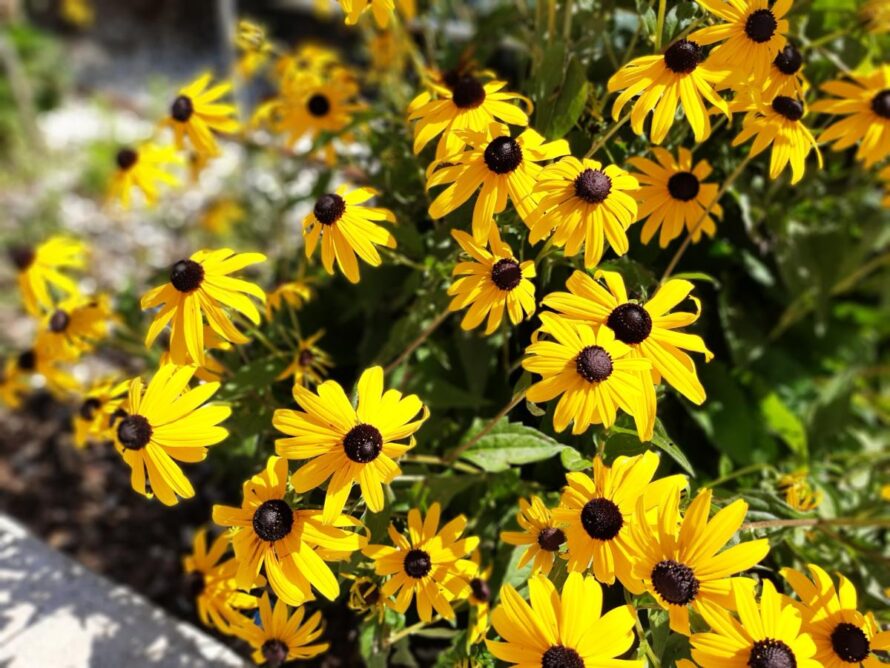
| Color varieties: | Yellow to orange with brown center |
| Soil: | Average, well-draining, medium moisture |
| Sun exposure: | Full sun |
| USDA growing zones: | 3 – 7 |
A common perennial that is readily available and can quickly become invasive if not controlled. The black-eyed Susan self-sows; a single plant can turn into hundreds in no time.
While it may not be a problem in expansive gardens, it’s important to note that overcrowding plants will often impact the nutrients available and reduce air circulation. This can increase the chances of your plants getting attacked by diseases and pests.
Remove extra plants to ensure enough airflow to limit the risk of this occurring. While they are a good food source for birds in the fall, it’s essential to deadhead faded blooms to prevent self-sowing.
6. Hens and Chicks (Sempervivum tectorum)
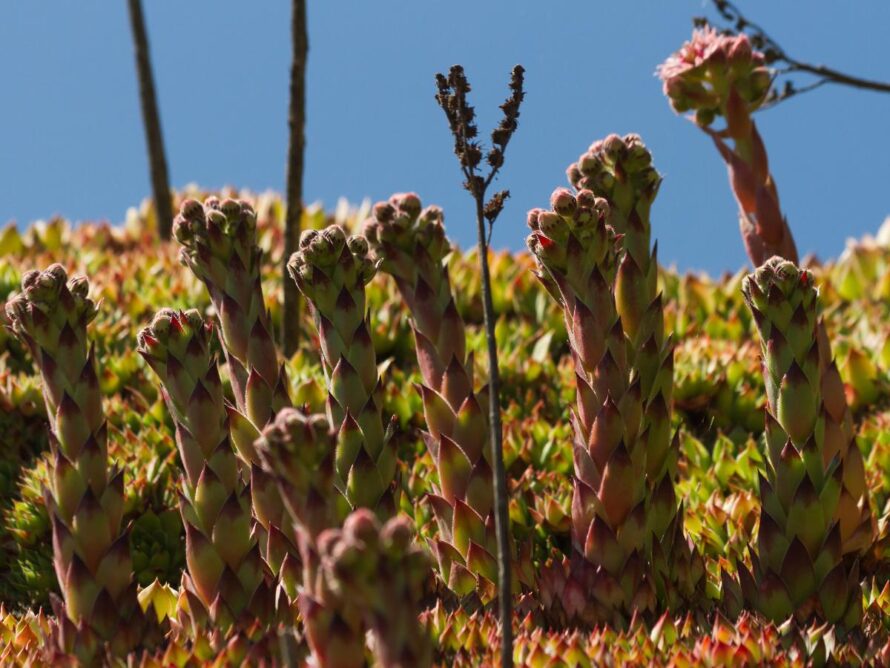
| Color varieties: | Red, purple |
| Soil: | Well-draining, dry to medium moisture |
| Sun exposure: | Full sun |
| USDA growing zones: | 3 – 8 |
If you like succulents, then Hens and chicks will likely wow your garden. The plant consists of parent rosettes (the hens) and offspring (the chicks). While it may look vulnerable, this hardy perennial can thrive in dry, rocky, and sandy soil.
As do most succulents, the plant requires minimal watering. Grow the Hens and chicks in well-draining soil, and don’t overwater them. After blooming, the rosettes die, so you’ll have to remove them to allow the offspring to thrive.
7. Lamb’s Ear (Stachys byzantina)
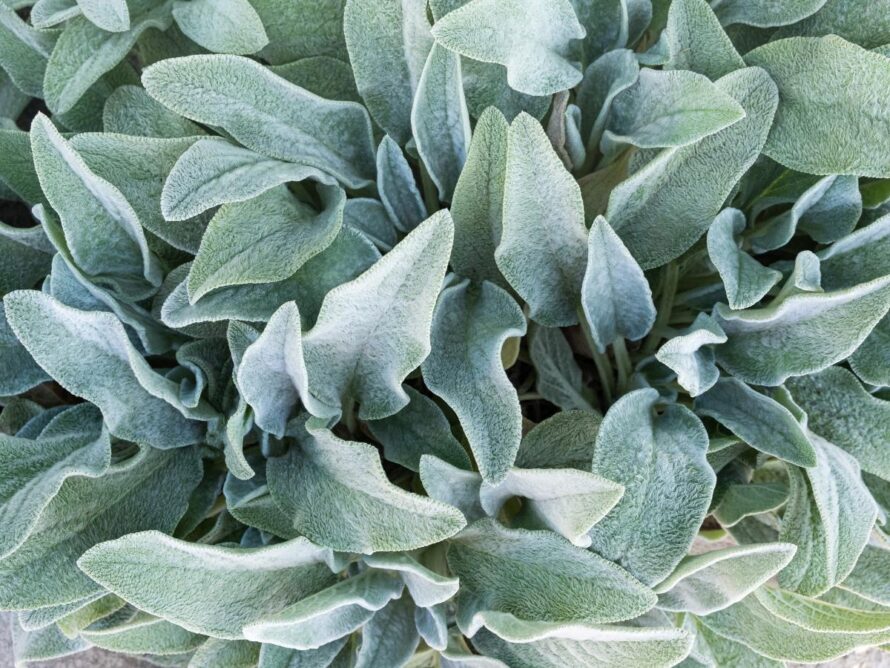
| Color varieties: | Purplish-pink |
| Soil: | Well-draining, dry to medium moisture |
| Sun exposure: | Full sunlight |
| USDA growing zones: | 4 – 8 |
Another silvery full-sun perennial that can adorn your garden. The Lamb’s ear is a low-maintenance perennial that thrives in full sun and dry soil conditions. It’s the perfect addition for busy people who want to grow flowering plants. The plant has soft, velvety leaves with a silverish color.
Blooming time for this hardy perennial is during the spring when it produces purplish pink blooms, so it’ll surely add to the beauty of your garden. While the blooms may seem inconspicuous, they attract pollinators such as bees. Besides tolerating full sun and dry climates, the Lamb’s ear is also resistant to deer, so it’s the perfect low-maintenance plant.
Ensure you don’t expose the plant to overly humid areas, which could lead to root rot. Grow the plant in well-draining soil and minimize watering except during hot summers or after a prolonged period; the plant can do with just rainfall.
8. Snow-in-Summer (Cerastium tomentosum)
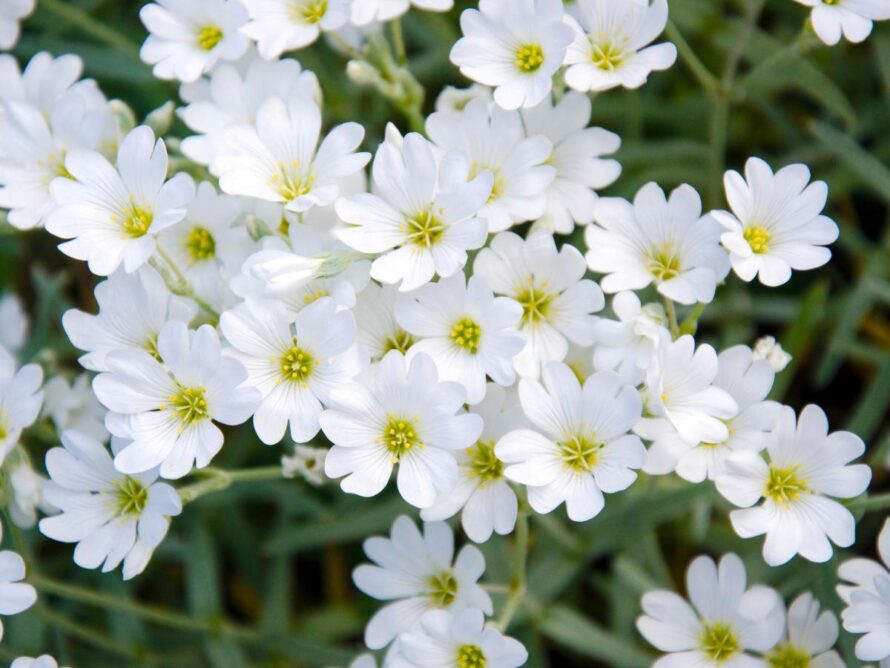
| Color varieties: | White |
| Soil: | Well-draining, sandy |
| Sun exposure: | Full sun |
| USDA growing zones: | 3 – 7 |
One of the most beautiful flowers especially in rock gardens. As the name suggests, this plant mimics the look of snow in the summer with its white flowers that appear bright against the silver background of its foliage.
This low-growing perennial spreads and blooms when grown under full sun, providing good ground cover. Pair it with colorful blooms such as coneflowers (Echinacea) or roses (Rosa spp.) to bring out its beauty and color. Once the blooms have faded, prune them out to prevent the risk of self-seeding.
When pruning the flowers, ensure you tidy up the plant by removing any dead or diseased leaves or flowers. You can also shape out the plant.
9. Salvia (Salvia spp.)
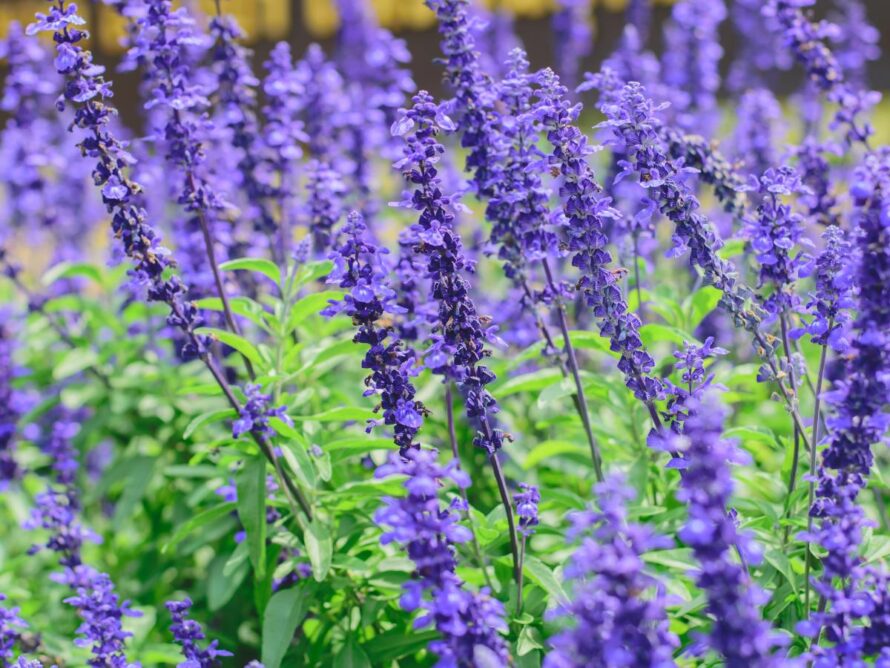
| Color varieties: | Blue-violet, pink |
| Soil: | Average, dry to medium moisture, well-draining |
| Sun exposure: | Full sun |
| USDA growing zones: | 4 – 8 |
This is one of the most common and popular perennials to grow in full sun. While the most common variety is the red annual, there are several other kinds of salvia, most of which are blue-violet. However, you can also find some cultivars in pink.
Some cultivars that may thrive in full sun and dry climatic conditions are Blue Hill, Caradonna, and May Night. As with several plants in this category, removing faded flowers is vital to rejuvenate blooming.
10. Yellow Alyssum (Aurinia saxatilis)
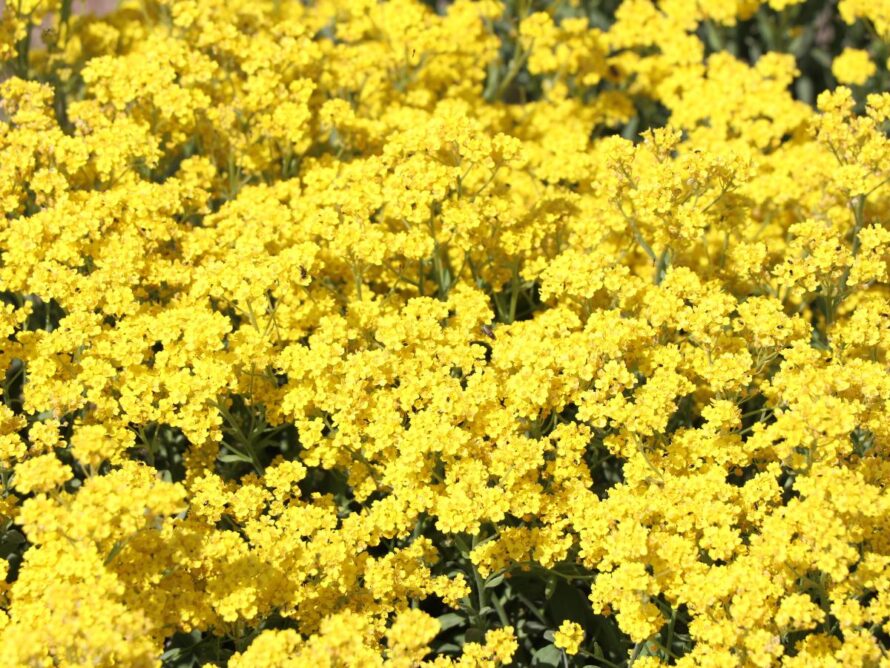
| Color varieties: | Yellow |
| Soil: | Well-draining, loamy to sandy |
| Sunlight exposure: | Full sun |
| USDA growing zones: | 4 – 7 |
Also known as the Basket-of-gold, this low-growing perennial produces bright yellow flowers and is the perfect ground cover. If you have unsightly bare patches, the yellow alyssum can cover and brighten the spot.
While they may resemble each other, don’t confuse the yellow alyssum with the Sweet alyssum (Lobularia maritima). Basket-of-gold can be differentiated by its bright yellow flowers, which bloom in spring. Cut the plant by about half once the blooming period is over to ensure it maintains its shape.
Grow the plant in well-draining soil and ensure it isn’t waterlogged, which could damage the plant.
11. Catnip (Nepeta cataria)
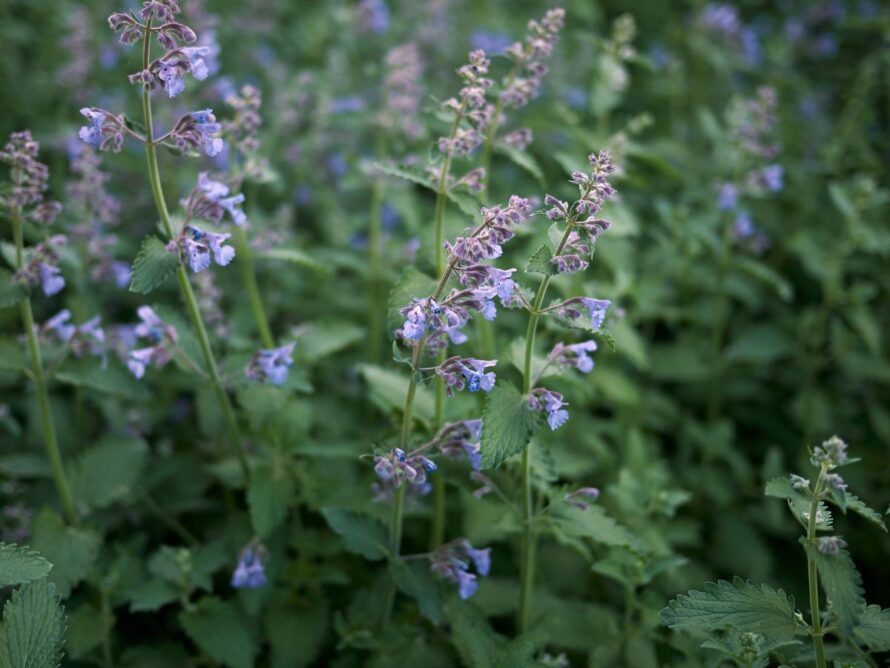
| Color varieties: | White and pale purple |
| Soil: | Well-draining with dry to average moisture |
| Sun exposure: | Full sun |
| USDA growing zones: | 3 – 7 |
Nothing beats an edible, hardy, flowering perennial in your garden, and Catnip is just the plant. The name of this perennial comes from the fact that it contains essential oils that many cats love. The plant is also easy to maintain since it can tolerate drought and survive under the shade.
Ensure the plant isn’t overwatered, as wet soil can kill it. You can move the plant under the shade during hot summer days. To encourage further blooming, remove faded flower spikes and divide established plants to prevent crowding.
12. Shasta Daisy (Leucanthemum x superbum ‘Becky’)
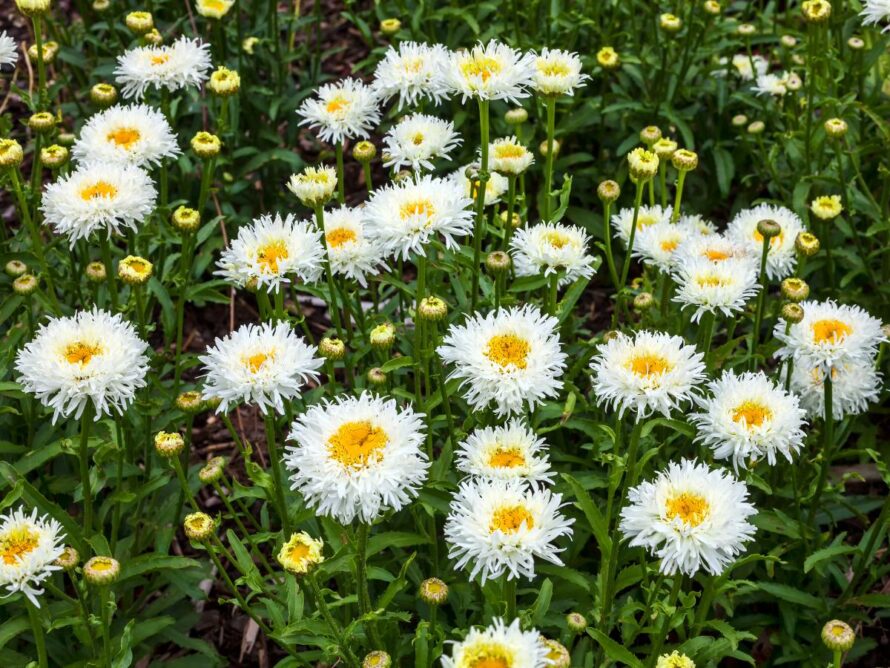
| Color varieties: | White with a yellow center |
| Soil: | Well-draining, dry to average moisture |
| Sun exposure: | Full sun |
| USDA growing zones: | 5 – 9 |
The Shasta daisy is like a ray of sunshine in your garden with its ray-like petals that radiate from its yellow disk. It’s a statement maker, mainly when grown with other bright colors.
The good thing about this flower is that it thrives in dry and sunny areas and can also tolerate cold temperatures. However, beware of wet soil, which can cause tremendous damage to your plants or even kill them.
Good draining soil is a crucial requirement for this soil. You should also remove any dead flowers to encourage reblooming.
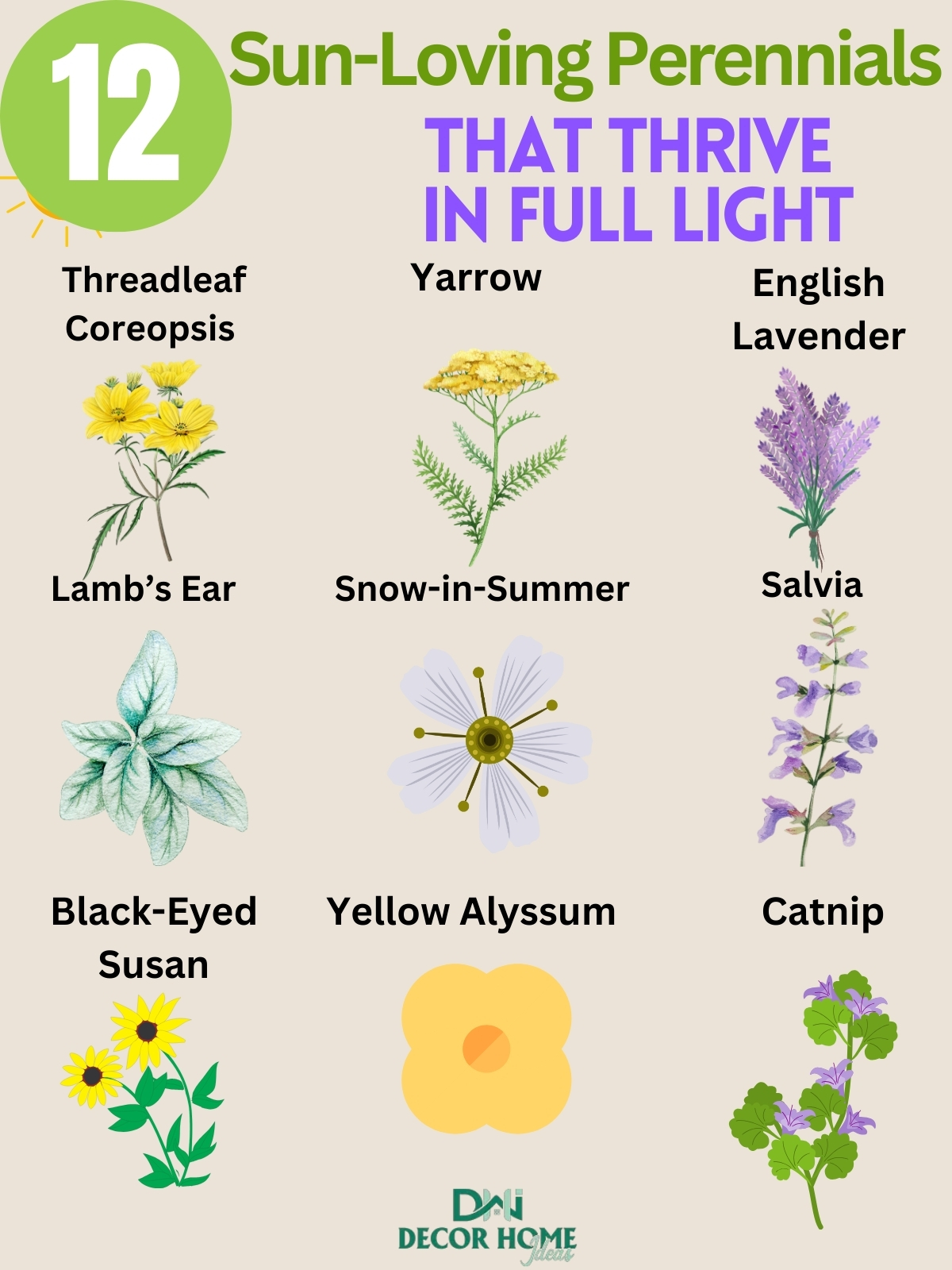
Fill your garden with these resilient perennials that thrive under full sun.
Black-eyed Susans and threadleaf coreopsis bring vibrant yellow blooms, while yarrow and salvia add texture and height.
English lavender and catnip offer fragrance and attract pollinators, while snow-in-summer provides a delicate white contrast.
Perfect for a bright, low-maintenance, sun-soaked landscape!


